SEPTEMBER/ OCTOBER 2024

NATALIE PORTMAN ICONIC ACTRESS IS REDEFINING SUCCESS
EATING CLEAN A SIMPLE PATH TO HEALTHIER EATING
STRESS AND ANXIETY LESSONS FROM OUR GRANDPARENTS

SEPTEMBER/ OCTOBER 2024

NATALIE PORTMAN ICONIC ACTRESS IS REDEFINING SUCCESS
EATING CLEAN A SIMPLE PATH TO HEALTHIER EATING
STRESS AND ANXIETY LESSONS FROM OUR GRANDPARENTS

Denton Rehab is a locally owned and operated skilled nursing facility that is licensed by the State of Texas and certified to participate in both the Medicare and Medicaid programs. Our core management team has worked together for years and has decades of experience providing compassionate healthcare.
When you require professional, dependable, skilled nursing care to regain your health and strength, chose the expert team at Denton Rehab. We invite you to stop by and meet our friendly staff.


We’re excited to soon be able to show you our beautiful new community in Denton, located on six beautiful acres conveniently located next to Medical City Denton.
Our new facility will have 94 private beds with ensuite and shower. We will have two suites that include ensuite, shower and a living area.
Our new community has three living areas, two dining areas, a private dining area for families, cultural center, sitting parlor, beauty shop, activities center, whirlpool room, therapy gym, and eight covered outdoor areas to relax and view nature and the beautiful, landscaped grounds. Our state-of-the-art kitchen uses green technology to provide healthier, more delicious food. Denton Rehab’s nurses and certified nurse aides provide aroundthe-clock care. Doctors and nurse practitioners make rounds three times a week while our medical director makes rounds twice a week. Our number one goal is helping you recover and rebuild your life. Our Focus is You!

Texas Hip and Knee Center Fellowship Co-Director and Faculty at the Anne Burnett Marion School of Medicine at Texas Christian University
Dr. David Shau is a native Texan, born in Fort Worth, TX. He graduated high school in Flower Mound, TX, and attended the University of Texas at Austin, where he studied biomedical engineering. Dr. Shau then ventured out-of-state to work at leading academic orthopedic surgery centers, including Vanderbilt University, Emory University, and University of California, San Francisco, before being recruited to return home to practice at the premier DFW joint replacement group, the Texas Hip and Knee Center (THK).
Dr. Shau has quickly built his practice through connecting with his community, committing to quality service, and delivering excellent patient care. He utilizes a variety of techniques and approaches for hip and knee care, including direct anterior hip replacements, and offers technology-assisted surgeries, such as Mako Technology for partial and total joint replacements. He also specializes in revision joint surgeries and enjoys complex, challenging cases. As a result of dedicating himself to his craft, his partners at THK promoted him to Fellowship Co-Director early in his practice. Dr. Shau also serves as a Physician Development Coach and is an Assistant Professor at the Burnett School of Medicine at TCU, where he enjoys his roles as a teacher, mentor, and coach.
In his free time, he enjoys food, sports, music, and spending time with his wife and daughter. For more information on Dr. Shau’s care philosophy and the techniques/approaches offered for hip and knee care, please visit DavidShauMD.com.




Welcome to the latest issue of LIVING WELL Magazine. We’re excited to share some truly compelling stories with you—stories that highlight perseverance, transformation, and the pursuit of a fulfilling life.
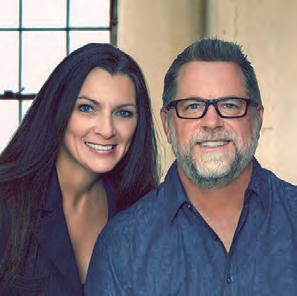
Our cover story dives into the life of Dr. Reza Mobarak, a man who started his journey waiting tables and worked his way up to becoming a double board-certified medical professional. Dr. Mobarak’s dedication to his patients at the Southwest Foot and Ankle Center and DFW Wound Care Center is something we can all admire. His journey shows that with hard work and a genuine desire to make a difference, you can achieve incredible things. Read his story on page 8.
For a bit of Hollywood insight, check out our feature on Natalie Portman on page 24. Her path from a young actress to an Oscar-winning star, who’s now navigating life post-divorce, is as intriguing as it is inspiring. Portman’s story is a reminder that even in the face of fame and public scrutiny, it’s possible to stay true to yourself and find new beginnings.
We’re also excited to bring you an article on clean eating—an approach to food that’s all about enjoying real, unprocessed foods that make you feel good. It’s not about cutting things out but rather making simple, mindful choices that support your health in a sustainable way. Check it out on page 32.
In another thought-provoking piece, we explore how our grandparents managed stress and anxiety in a time before smartphones and constant connectivity. Lessons from Our Grandparents is on page 44 and offers practical insights into how we can apply their wisdom to our fast-paced modern lives. It’s a gentle reminder that sometimes, the old ways are worth revisiting, especially when it comes to finding peace and balance.
As you flip through this issue, we hope you find these stories as inspiring and thought-provoking as we did while putting them together. There’s something in here for everyone, whether you’re looking for a dose of inspiration, practical tips, or just a good read.
Thank you for being part of our LIVING WELL community. Enjoy the issue!
Stay well. Stay inspired!

PRESIDENT & CEO SAM HOUSTON
VICE PRESIDENT & CFO SPRING HOUSTON
EDITOR, FEATURE WRITER & SOCIAL MEDIA SONDRA BARR
ART DIRECTOR VANESSA FRYER
ACCOUNTS MANAGER JENNIFER BEAVERS
WEBSITE LYDIA ROGERS
ADVERTISING & SALES
TEXAS: Denton County, Dallas County, Collin County
TEXAS & OKLAHOMA: Texoma Area
WRITE TO US:
Tell us who you would like to see featured on the cover, or what subjects you would like covered in upcoming editions of LIVING WELL MAGAZINE at info@livingwellmag.com
SUBSCRIPTIONS & CUSTOMER INQUIRIES
Houstons of Dallas Publishing, Inc. 102 E. Broadway, #901 Prosper, TX 75078
www.LivingWellmag.com
Phone: (214) 507-1000 Fax: (855) 248-2132
LIVING WELL MAGAZINE is a source for quality educational articles on living a healthy, vibrant life. Our focus is on connecting our readers with the latest information on a host of topics relevant to their evolving life. From cutting edge medical news and procedures to top-tier financial, legal and lifestyle information. Connecting readers to leading medical and business professionals in their community in Texas and Oklahoma.
All advertisements in this Magazine are placed by third parties. We do not control or endorse either the advertisements or their content. Further,



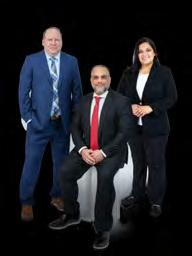

Total
Total Knee Replacement
Partial Knee Replacement
Total
5575 Frisco Square Blvd., Ste. 530 Frisco, TX 75034 (972) 566-5255
4201 Medical Center Dr., Ste. 100 McKinney, TX 75069 (469) 796-4295
204 Medical Dr., Ste. 110 Sherman, TX 75092 (469) 796-4295
Please




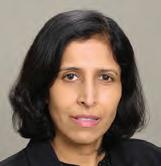
There are many reasons why it’s important to care for your heart. At Texas Health Heart & Vascular Specialists, our reason is you. With heart care plans customized to you and your needs, we’re ready to help you achieve a heart-healthy future. From proactive prevention and diagnostics to advanced bypass and valve surgery and more, discover our compassionate and comprehensive approach to your heart health. Schedule your in-person or virtual visit today.
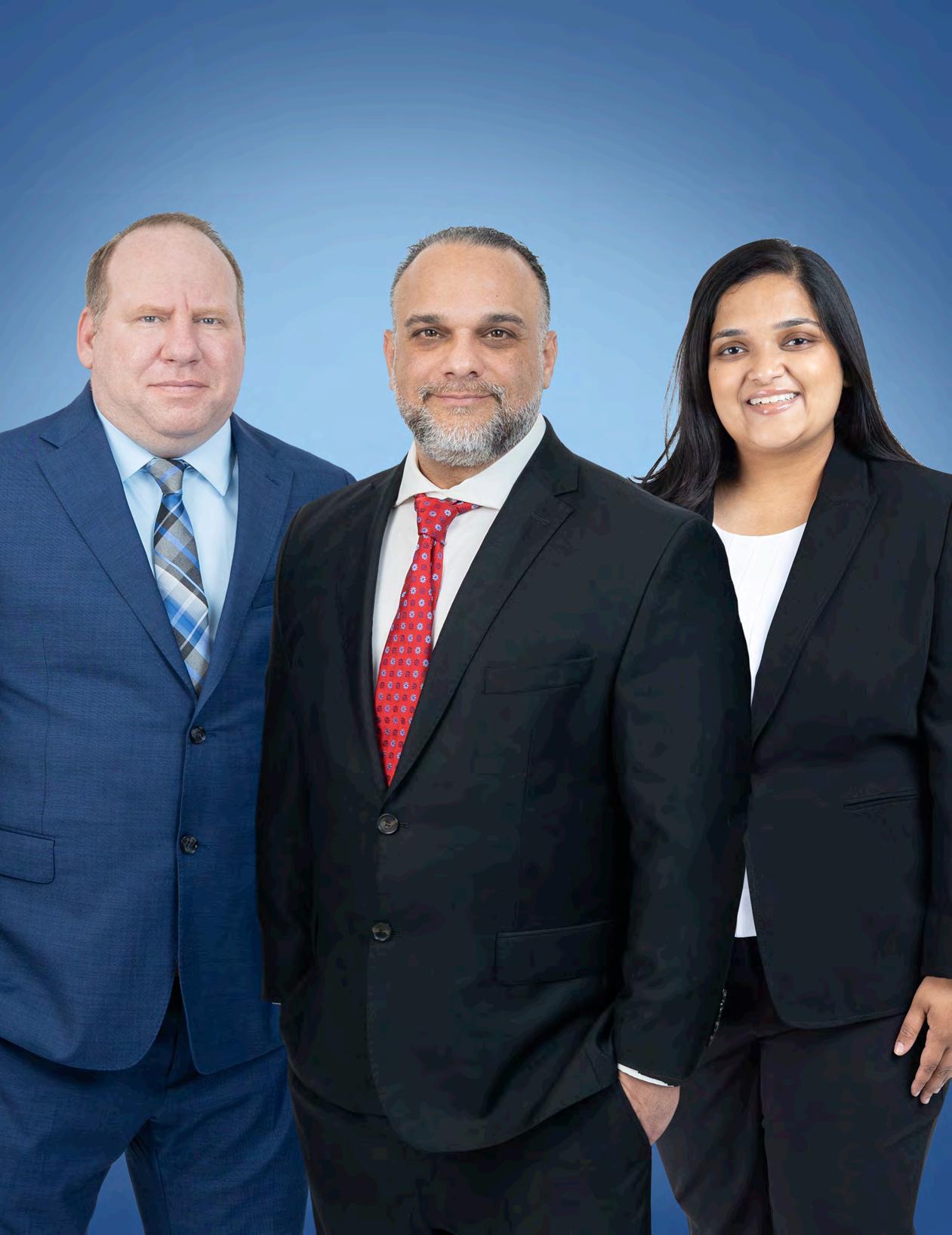
DR. REZA MOBARAK AND HIS TEAM BRING A DEPTH OF KNOWLEDGE TO THEIR PATIENTS AT SOUTHWEST FOOT AND ANKLE CENTER AND DFW WOUND CARE CENTER.
Patients always come first for Reza Mobarak, DPM, FACFAS, FAPWCA. Double board certified in foot and ankle surgery and wound care, he has been providing exceptional patient care for over 20 years in the DFW metroplex.
It’s a philosophy that developed early on in his life and it’s one that has helped guide him in his journey to earn a distinguished reputation among his professional colleagues, medical peers and, most importantly, his patients.
He began his medical career from the ground up. While a teenager, Dr. Mobarak spent nights and weekends waiting tables to earn money to attend medical school. Working hard taught him the value of serving his customers, which translated to his patients as a doctor.
After immigrating to America from Iran in the early 1970s, his parents worked hard to establish a life in America. Interested in medicine from a young age, he pursued any opportunity to learn about the field in school. Growing up in South Dallas introduced him to America’s prospects, as did attending Asher Silverstein Elementary School.
Inspired by his parents’ immigration to America, education was always a priority. A national merit scholar at J.J. Pearce High School, Dr. Mobarak went on to earn his bachelor’s degree in biochemistry with honors from Baylor University in just three years. From there, he attended Barry University School of Podiatric Medicine in Miami, Florida, and graduated with a Doctorate in Podiatric Medicine and Surgery. Utilizing summers to work and volunteer at local hospitals, he learned as much as he could about medicine in the clinical settings provided by the diverse Miami population. He also volunteered as a student in the South Florida community.
A surgical residency at Central Alabama Veterans Health Care System in Montgomery, Alabama, followed and furthered his specialty training in foot and ankle trauma, reconstruction surgery and intense limb salvage. Helping American veterans recover from unhealing wounds inspired Dr. Mobarak to attain his board certification in wound care. From there, he continued to gain more knowledge and insight on how to help his patients, specifically veterans, with proper preventative procedures, while recognizing there was room for much improvement in the tools at hand in podiatry and wound care fields.
I like to educate my patients, student doctors, and other doctors. It gives me satisfaction knowing that we will be able to prevent health issues, while ensuring physicians know how to treat and heal wounds.
–DR.
DPM,
FAPWCA
As a native Texan, he returned to Dallas after his residency to work in Mansfield and the DFW Metroplex, further developing his training in podiatry and wound care. He founded Southwest Foot & Ankle Center & DFW Wound Care in 2009 with locations in Plano and Lewisville. Working hard, he grew his practice to five locations and added two associates, Dr. Mitch Williams and Dr. Joshua Worley, to more efficiently serve patients.
An emerging social media luminary, he offers unparalleled access to his work on TikTok @theDFWfootDoc and Instagram as @DFWfootDoc, where patients and fans get a behind-the-scenes look at procedures and outcomes. He has a love for his senior patients but also wants to reach younger generations and educate them on these platforms about prevention and medical procedures available. Dr. Mobarak’s extensive knowledge of podiatry and hands-on experience working with patients makes him one of the best at treating pediatric, senior, and sports injuries, which shines through in social media.
Led by Dr. Mobarak, the skilled team at Southwest Foot & Ankle Center cares for patients with foot and ankle problems using a wide array of state-of-the-art tools and techniques—from conservative physical therapy and injection therapy—to advanced surgical intervention.
“We employ a variety of treatments to heal foot and ankle problems and foot and ankle surgeries, in addition to cutting-edge laser technology, incorporating both high tech and high touch,” says Dr. Mobarak.
Endorsed by the Advanced Foot and Ankle Surgeon and American Professional Wound Care Association, Dr. Mobarak is also a Fellow of the American Professional Wound Care Association and board certified in wound care and foot reconstruction. He is also trained in hyperbaric oxygen treatment.
An adjunct faculty member at Barry University School of Podiatric Medicine and Surgery and the Hunt Regional Podiatric Surgical Residency Program, Dr. Mobarak loves teaching his surgical residents the newest and most effective techniques in foot and ankle surgery and limb salvage.
Combining his knowledge of foot surgery with his love of teaching,

Dr. Mobarak is an avid lecturer. He speaks at national and international events on advanced wound care, diabetic limb salvage, hyperbaric medicine, foot pain, and ankle trauma. This he combines with writing extensively in medical journals emphasizing wound care and limb salvage.
Another area in which Dr. Mobarak is particularly adept is the triple nerve release. He completed an intense surgical course in treating numbness, tingling, and tarsal tunnel syndrome. As a result, he provides a treatment that allows patients to walk the next day after surgery and decreases pain after surgery.
Known for his extensive knowledge of wound care, limb salvage, and foot and ankle trauma treatments, patients come from throughout the region to Southwest Foot and Ankle Center. They know they can trust their wounds to Dr. Mobarak because he treats each patient as an individual (both surgically and non-surgically), saving their limbs from amputation.
Helping others is a passion of Dr. Mobarak, evidenced by his travels to the Middle East to teach other doctors about limb salvage. There, he also started a hyperbaric oxygen program. “I like to educate my patients, student doctors, and other doctors. It gives me satisfaction knowing that we will be able to prevent health issues, while ensuring physicians know how to treat and heal wounds. I want to accomplish and work toward continuing this in the years to come,” he says. “I also do this in my personal life; accomplishing my goals and finishing something I didn’t think I could do helps me push through any obstacles.”
The medical field is not the only arena in which Dr. Mobarak excels. He approaches fitness with the same dedication and vigor he applies to medicine. Waking up at 5 a.m. to work out in his garage, which he converted to a home gym, Dr. Mobarak never waivers from the goal at hand—exceeding his personal best.
He believes fitness and wellness should be a priority and shares this with his patients. If his schedule wasn’t full enough, Dr. Mobarak also volunteers his time to the community, enjoys bodybuilding and traveling. He also coached his son and others in Greco Roman and freestyle wrestling.









VUDHI SLABISAK, MD OrthopaedicSpineSurgeon





BRUCE MARKMAN, MD OrthopaedicSurgeon&Sports MedicineSpecialist


JAMES STANLEY, MD OrthopaedicSpineSurgeon





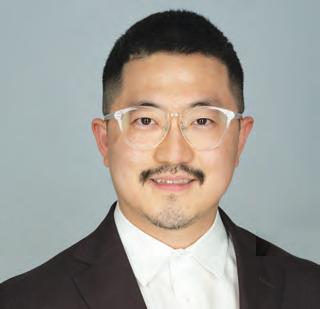

STEVE HONG, MD Interventional Pain ManagementSpecialist








RAHUL BANERJEE, MD OrthopaedicSurgeon

GEOFFREY G. GLIDDEN, MD OrthopaedicSurgeon










AMIR MALIK, MD Neurosurgeon





KHAWAJA IKRAM, DO OrthopaedicSurgeon


BRIANA HODGSON, PA-C OrthopaedicSurgery PhysicianAssistant

CHARLES MARDER, DPM Podiatrist,Foot&AnkleSurgeon
If you’re suffering from pain or an athletic injury, schedule an appointment with your preferred NTOS location for effective, compassionate treatment.

Dallas Brain, Spine and Skull Base Surgery is a neurosurgical practice that offers over 40 years of experience providing an innovative and collaborative state of the art approach to the care of patients with challenging neurological problems from around the world. Dr. Beshay and Dr. Coimbra have developed unique expertise in the treatment of brain tumors becoming the referral destination for the treatment of patients, especially those with complex or difficult to access tumors. They have also shown a commitment to the development of minimally invasive neurosurgical procedures including the most modern expanded trans–nasal endoscopic skull base surgical techniques and focused extradural approaches to skull base tumors.
Dr. Beshay’s interests include tumors of the brain and spine, minimally invasive spine surgery, complex spinal reconstruction, and epilepsy surgery. In addition to surgical treatment of intracranial and spinal disease, he has an interest in neurological bleeding and its reversal. Dr. Beshay’s clinical interests include: benign and malignant brain tumors, neuroendoscopy, epilepsy surgery, intracranial hemorrhage, cranial/ spinal trauma, minimally invasive spine surgery, complex spinal reconstruction with an interest in C1–C2 and occipito–cervical junction disease.
Dr. Coimbra restricts his practice mostly to intracranial neurosurgery. This selective tertiary practice has fostered the opportunity to develop unique expertise and commitment to the treatment of malignant and benign brain tumors. He is an expert in the minimally invasive resection of the most complex skull base tumors, including meningiomas, acoustic neuromas, and pituitary tumors. He employs CyberKnife radiation therapy, endoscopic endonasal techniques, and an array of focused skull base approaches to create a customized treatment plan for each patient in his practice. These innovative approaches allow resection of deep, difficult, and complex tumors with minimal brain tissue manipulation and maximal preservation of function.
Dr. Coimbra and Dr. Beshay believe in customized patient care and a team approach to medicine with attention to careful selection of the least invasive and most effective treatment for each patient. Their commitment to this philosophy has resulted in maximum preservation of function, less discomfort, shorter hospital stays and durable favorable outcomes for their patients.



By BOB DICKERMAN

Middle age can be a challenging time in life, often marked by a feeling of being stuck in a rut with no clear direction or purpose. As we reach this stage, the goals and dreams that once fueled our ambition may seem distant or unfulfilled, leaving us to wonder if we’ve lost our way. The sense of disconnection, both from our younger selves and from the life we thought we would be living, can create a profound feeling of emptiness. But it’s important to remember that this stage of life, though difficult, can also be an opportunity for transformation. With the right mindset and approach, you can rediscover your sense of purpose and find new meaning in your life.
One of the first steps in overcoming the feeling of being stuck is to acknowledge and accept where you are. It’s easy to fall into the trap of self-criticism, questioning why you haven’t achieved more or why you feel so lost. However, self-compassion is essential in this process. Recognizing that everyone goes through periods of doubt and uncertainty can help you approach this time with a gentler, more understanding mindset. Instead of viewing your current situation as a failure, try to see it as a natural part of life’s journey. This shift in perspective can open the door to new possibilities and growth.
Middle age is often a time of reflection, where we begin to assess the choices we’ve made and the paths we’ve taken. This introspec-
tion can be both enlightening and overwhelming, as we confront the reality that life may not have turned out exactly as we had planned. Perhaps you’re grappling with unfulfilled dreams, wondering if it’s too late to pursue them. Or maybe you’ve achieved many of your goals, only to find that they haven’t brought the satisfaction you expected. These feelings are common, and they don’t mean that you’ve lost your way. Rather, they can serve as a catalyst for change, prompting you to explore new directions and redefine what success and fulfillment mean to you.
One of the challenges of middle age is that it often coincides with significant life transitions. Children may be leaving home, careers may be shifting, and relationships may be evolving. These changes can leave you feeling unmoored, unsure of where to direct your energy and focus. It’s important to recognize that these transitions, while difficult, also present opportunities for renewal. With the responsibilities of early adulthood easing, you may find that you have more time and freedom to explore new interests and passions. This can be a time to reconnect with the things that once brought you joy, or to discover new pursuits that ignite your curiosity.
Reconnecting with your passions can be a powerful way to reignite your sense of purpose. As we age, it’s easy to lose touch with the activities and interests that once excited us. Responsibilities and obligations often take precedence, leaving little room for the things we truly enjoy. But now, as you find yourself at a crossroads, it’s worth taking the time to rediscover those passions. Whether it’s a hobby you’ve neglected, a creative pursuit you’ve always wanted to try, or a cause you feel strongly about, engaging in activities that resonate with you can provide a renewed sense of meaning and direction.
In addition to exploring your passions, it’s important to consider your values and how they align with the life you’re living. Middle age is a time when many people begin to question the choices they’ve made and whether those choices truly reflect who they are. This can be a difficult process, as it may require confronting uncomfortable truths about yourself and your life. However, it’s also an opportunity to make changes that align more closely with your authentic self. Grab a journal and take some time to reflect on what’s truly important to you. What are the values that guide your decisions and actions? How do you want to contribute to the world? By clarifying your values, you can begin to make choices that are more aligned with your true self, leading to a greater sense of fulfillment.
As you navigate this period of self-reflection and exploration, it’s important to stay open to change. This can be a time of reinvention, where you have the chance to reshape your life in ways that reflect your evolving identity. This might involve making small adjustments, such as adopting new habits or pursuing new interests, or it could mean making more significant changes, such as changing careers or reevaluating your relationships. While change can be daunting, it’s
also a powerful tool for growth. Embracing change with an open mind and a willingness to take risks can lead to new opportunities and experiences that bring renewed purpose to your life.
Relationships play a crucial role in our sense of purpose and fulfillment, and middle age is often a time when relationships undergo significant changes. Whether it’s a long-term partnership, friendships, or family connections, these relationships can provide support, love, and a sense of belonging. However, it’s also a time when some relationships may begin to feel stagnant or strained. This can be particularly true in romantic relationships, where the routine of daily life can sometimes lead to a loss of connection.
If you’re feeling disconnected in your relationships, it’s important to address these feelings openly and honestly. Communication is key to maintaining strong, healthy relationships, and it’s never too late to work on deepening your connections with the people you care about. If we’re blessed to live to be middle aged, we will all be faced with how to deal with these feelings. So, it’s a good time to reach out to friends and walk through it together.
Joining clubs, volunteering, or taking classes are all great ways to connect with others who share your passions. These new connections can bring fresh perspectives and energy into your life, helping you feel more engaged and connected.
Feeling stuck in a rut can take a toll on your health, leading to stress, anxiety, and a lack of motivation. Prioritizing self-care is essential for maintaining your energy and resilience as you navigate this period of your life. Regular exercise, a balanced diet, and sufficient sleep are all crucial components of physical health, while practices like mindfulness, meditation, or therapy can support your mental well-being. Taking time to care for yourself not only improves your overall quality of life but also gives you the strength and clarity to pursue new directions and opportunities.
It’s important to remember that finding purpose and direction is a journey, not a destination. It’s normal to feel uncertain or lost at times, and it’s okay to take things one step at a time. Rather than focusing on a specific outcome or goal, try to stay present and engaged in the process of self-discovery. Be patient with yourself as you explore new possibilities and trust that, over time, clarity will come. The path to a fulfilling life is often winding and unpredictable, but it’s one that holds the potential for profound growth and transformation.

DFW Wound Care Center is a group of wound care specialists in all of the DFW area. They are fellow trained surgeons, and board certified in wound care and reconstructive surgery. All physicians have also completed an intense residency and fellowship in the area of limb salvage, and foot and ankle surgery. When it comes to wound care and limb salvage, DFW Wound Care Center has the knowledge and experience to successfully treat your condition. As a result, patients from all over the country seek to be treated by DFW Wound Care Center.

Whether caused by diabetes, infection or disease, any wound that will not heal can be very serious. If you are experiencing a wound or ulcer that will not properly heal, our wound care center can provide a range of expert treatment options best in each case. We offer non-surgical and surgical treatments for:
Diabetic Wounds & Ulcers
Arterial Ulcers
Infected Wounds
Open Wounds
Pressure Ulcers
Vascular Wounds
Acute Wounds
Non-Healing Wounds
Chronic Wounds
Surgical Wounds
Traumatic Wounds




PLANO CLINIC 5804 Coit Road, Ste. 100 Plano, TX 75023
LEWISVILLE CLINIC
502 N. Valley Pkwy., #2 Lewisville, TX 75067
IRVING CLINIC
6161 N. State Hwy. 161, Ste. 320 Irving, TX 75038
DESOTO CLINIC
714 N. Hampton Rd. DeSoto, TX 75115
Dr. Courtney is a board-certified orthopedic spine surgeon located in Plano, Texas. A Louisiana native, he attended Louisiana State University for medical school, and completed residency at Texas A&M followed by a fellowship at the Florida Neck and Back Institute.
SPECIALTIES:
• Back Pain
• Neck Pain
• Spine Pain
• Disc Replacement
• Microdiscectomy
• Spinal Fusion
• Minimally Invasive Surgery
• Steroid Injections
• Physical Therapy
“I believe in treating each of my patients with honesty, dignity, and respect. My patients come away from our shared interactions feeling confident, assured that they are truly in the best hands. Throughout my career, I have remained laser-focused on providing world-class care and innovation to the patients I treat on a daily basis. I look forward to getting to know you!”




Total
Headache








Justin M. Kane, MD, FAAOS ~ Foot and Ankle Orthopedic Surgeon
• Minimally invasive bunion and foot/ ankle surgeries
• 4-D DynaBunion and Lapiplasty bunion correction
• Total ankle replacement (TAR)
• Hammer toes

• Arthritis and deformity correction
• Lateral ankle instability
• PARS Achilles repair
• Foot and ankle cartilage injuries
• Limb salvage surgery
Vikas V. Patel, MD ~ Upper Extremity Orthopedic Surgeon
• All fractures
• Shoulder arthroscopy
• Rotator cuff repair
• Sports related injuries
• Carpel tunnel syndrome
• Trigger finger
• Wrist and hand surgery
• Shoulder and elbow replacement
• Complex revision procedures of the upper extremity
Leroy Butler, DO, FAAOS ~ Foot and Ankle Orthopedic Surgeon
• Minimally invasive bunion and foot/ankle surgeries
• 4-D DynaBunion and Lapiplasty bunion correction
• Total ankle replacement (TAR)
• Arthritis and deformity correction
• Lateral ankle instability
• PARS Achilles repair
• Foot and ankle cartilage injuries
• Trauma
Christopher Kowalski, MD ~ Orthopedic Spine Surgeon
• Minimally invasive spine surgery
• Complex revision spine surgery
• Spinal deformity correction surgery
• Cervical disc replacement
• Anterior/posterior cervical fusion
• Posterior cervical foraminotomies
• Lumbar microdiscectomy
• Lumbar laminectomy
• Lumbar fusion
• Anterior lumbar fusion
• Lateral lumbar fusion
Michael McHugh, MD ~ Orthopedic Hip & Knee Surgeon
• Total joint replacement
• Minimally invasive hip and knee surgery
• Robotic hip and knee surgery
• Treatment of hip dysplasia in adolescents and adults
• Complex revision surgeries
• Hip preservation

By SONDRA BARR
THIS IS GOING TO BE THE REST OF MY LIFE, PUTTING ATTENTION AND TIME AND LOVE INTO THIS.
From the streets of Jerusalem to the glittering stages of Hollywood, Natalie Portman’s journey is anything but conventional. At 11, she was plucked from obscurity while eating pizza, her wide-eyed innocence masking the fierce intelligence that would soon captivate audiences worldwide. By 13, she was walking her first red carpet, a rite of passage that would mark the beginning of an extraordinary career.
Now, after decades of fame, an Oscar win, and a very public divorce, Portman stands at a crossroads—embracing a new chapter with the same quiet determination that has defined her from the start. But behind the glamour and accolades lies a woman who has consistently chosen depth over superficiality, substance over spectacle. This is Natalie Portman, unfiltered and unafraid, as she navigates life beyond the silver screen, where the real story begins.
Born Natalie Hershlag in Jerusalem on June 9, 1981, Portman’s early years were shaped by a deep connection to her heritage and a keen sense of curiosity. Her parents relocated to the United States when she was 3, and Portman soon found herself adapting to life in various cities before the family settled in Long Island, New York. The constant movement fostered a sense of dislocation, a theme Portman would later explore in her work. “I’ve always felt disconnected from the places my family has lived because every generation has been in a different place,” she shared in a recent interview with The Guardian.
At just 11 years old, Portman’s life took a dramatic turn when she was discovered by a Revlon agent at a local pizza parlor. Portman found modeling mundane and instead gravitated toward acting, where she appeared in a number of local productions with the Usdan Theatre Arts Camp. Portman’s movie debut was in Luc Besson’s Léon: The Professional (1994), where she played Mathilda, the clever assassin protégé. The role showcased her innate talent and set her on a path to stardom. Reflecting on her early career, Portman told Vanity Fair, “I was lucky. My parents protected me, and I was lucky not to have any traumatic experiences. I feel a lot of gratitude, and I know how much is chance.”
“I have remarkable parents. I’ve never seen disappointing behavior from them…Neighter of my parents were ever involved financially at all in my career –at all. They were just very much parents—protective parents who didn’t want me exploited,” the actress told The Hollywood Reporter in 2016.

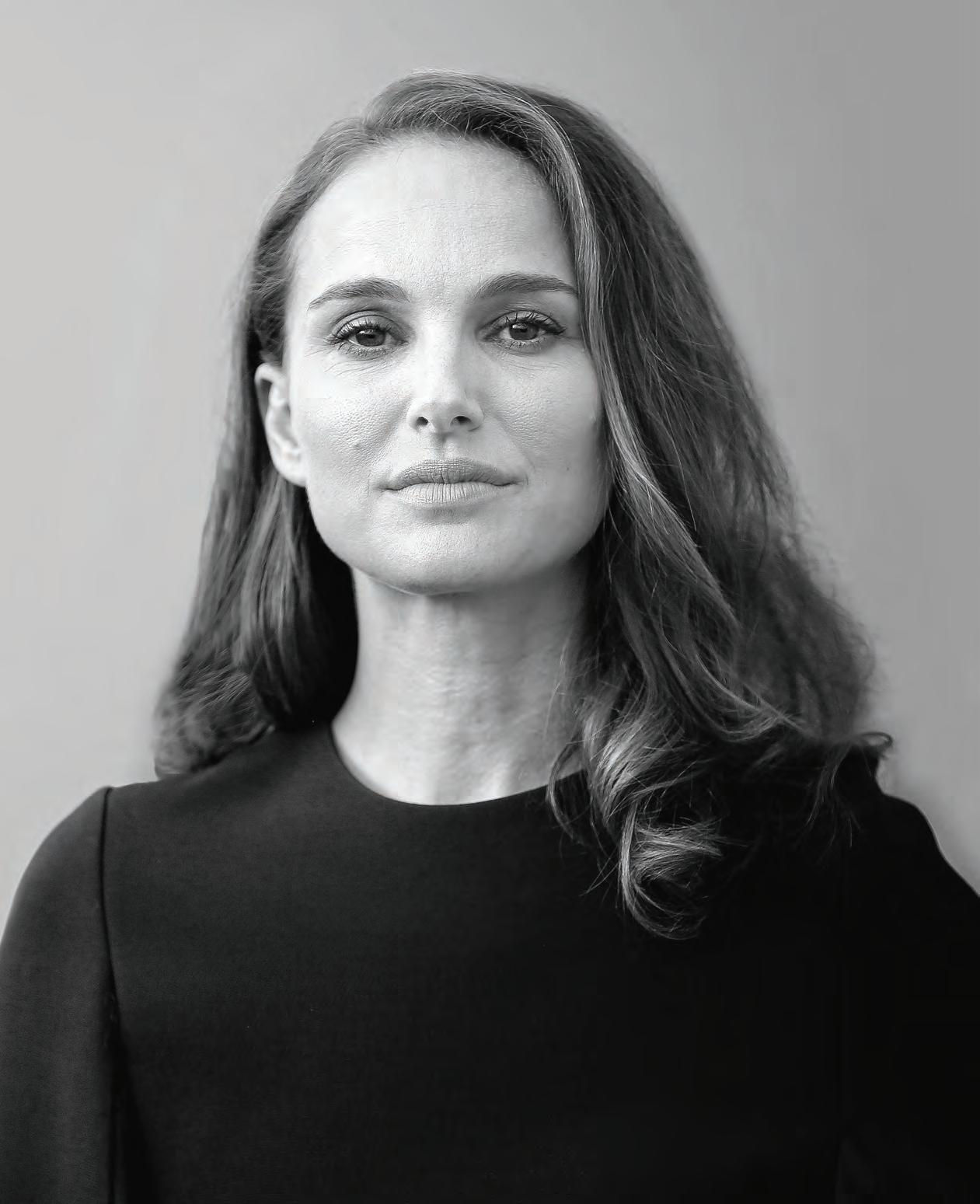
Portman’s transition from child star to serious actress was marked by a series of roles that highlighted her versatility. In the late 1990s, she appeared in a string of films that showcased her range, including Heat (1995), Beautiful Girls (1996), and Mars Attacks! (1996). However, it was her portrayal of Padmé Amidala in the Star Wars prequel trilogy that catapulted her to international fame. The films, while polarizing, cemented Portman’s status as a household name and introduced her to a global audience.
Despite the demands of her burgeoning career, Portman remained committed to her education. In 2003, she graduated from Harvard University with a degree in psychology—an indication of her intellectual curiosity and determination to live a life beyond Hollywood’s confines. Writer and director Greta Gerwig, her co-star in Jackie (2016), said to Vanity Fair, “She reads everything—there is no end to her curiosity. It’s never homework; it’s pleasure.”
Portman’s dedication to her craft reached new heights with her performance in Black Swan (2010). Portraying a ballerina descending into madness, Portman underwent a rigorous physical transformation, losing 20 pounds and enduring intense ballet training. The role earned her an Academy Award for Best Actress, cementing her place among Hollywood’s elite. “It was a beautiful experience, but also incredibly challenging,” Portman reflected. “I met my husband on it, so I think I was in, like, dreamland.”
Her now former husband, French dancer and choreographer Benjamin Millepied, played a role in Black Swan’s success. The couple married in 2012, and their union was often described as a fairy tale—one that later led them to Paris, where Millepied served as the director of dance at the Paris Opera. Two children, Aleph and Amalia, followed.
Portman has never been content to stay in front of the camera. In 2016, she made her directorial debut with A Tale of Love and Darkness, an adaptation of Amos Oz’s memoir. The film was a deeply personal project for Portman, who also wrote the screenplay and starred in the lead role. It was a bold move that highlighted her multifaceted talent and deep connection to her Israeli roots.
Portman’s career has been marked by a series of carefully chosen roles that reflect her intellectual and artistic ambitions. Whether playing a pop star in Vox Lux (2018) or the iconic Jacqueline Kennedy in Jackie (2016), Portman has consistently pushed the boundaries of her craft. “My work demands me to be believable, so the less people know

about me personally, the better,” she once told The Guardian. It’s a philosophy that has allowed her to maintain a level of privacy rare among celebrities of her stature.
In recent years, Portman’s life has been marked by significant change. In 2023, after 11 years of marriage, she quietly filed for divorce from Millepied, a decision finalized in early 2024. The news was met with surprise by many, but those close to her recognized it as part of her ongoing journey of self-discovery and growth.
Portman has never shied away from speaking her mind, especially on issues close to her heart. Her decision to decline the 2018 Genesis Prize, citing her discomfort with being onstage alongside Israeli Prime Minister Benjamin Netanyahu, made headlines and underscored her complex relationship with her country of birth. “I was choosing not to attend an event where I was supposed to be onstage with Prime Minister Netanyahu, sitting next to him, which felt like an endorsement,” she explained to Vanity Fair. This same commitment to her principles is evident in her work with Angel City Football Club, a women’s soccer team she co-founded.
Portman has expressed her long-term commitment to the project. “I know that you can’t just build it and then move on to another project,” she says. “This is going to be the rest of my life, putting attention and time and love into this.”
Since its founding in 2020 by Portman, venture capitalist Kara Nortman, and video game entrepreneur Julie Uhrman, Angel City FC has been a trailblazer in women’s sports. The club’s ownership group, composed predominantly of women, includes minority owners who are pioneers in their fields, such as Billie Jean King, Candace Parker, and 13 former players from the U.S. women’s national soccer team, including Julie Foudy and Mia Hamm. Angel City FC made its NWSL debut in the 2022 season and boasts a star-studded roster featuring players like Christen Press, Sydney Leroux, and sisters Alyssa and Gisele Thompson. Last year, the club led the league in attendance, revenue, and season ticket membership, solidifying its place as a powerhouse in women’s sports.
In a groundbreaking achievement for women’s sports, Angel City FC recently finalized a new ownership agreement, making it the highest-valued women’s professional sports team in the world.
Portman’s recent appearance on The Tonight Show highlighted her resilience and sense of humor in the face of personal challenges. When asked about her experience meeting Rihanna at Paris Fashion Week,


Portman quipped, “I think every woman going through divorce should get to have Rihanna say to her that she’s a bad b---h. It was a formative moment in my life.” The comment, delivered with a smile, was a reminder that Portman remains as grounded and relatable as ever, even after years in the spotlight.
As she moves forward, Portman is focused on living well—both for herself and her children. She has embraced a vegan lifestyle for over a decade, a decision she credits with helping her maintain her health and energy. “It’s such a privilege to age,” she told Elle in February 2024. “You have to appreciate it at every moment.”
Portman’s commitment to self-care extends beyond diet. She prioritizes regular massages and maintains a simple skincare routine. “I’m not very high maintenance,” she admitted. “I only really use face wash and moisturizer.”
As she enters this new phase of her life, Portman remains as passionate about her work as ever. She recently starred in May December and received a Golden Globe nomination for her performance. Additionally, in July, Portman’s production company released the highly anticipated adaptation of Laura Lippman’s Lady in the Lake on Apple TV+, a project where she not only stars but also plays a significant role behind the scenes. Set in 1960s Baltimore, the show follows Portman’s character, Maddie Schwartz, a Jewish housewife who boldly leaves her family to become an investigative journalist. Maddie soon finds herself reporting on the mysterious death of Cleo Sherwood, a Black activist played by Lupita Nyong’o, whose body is discovered in a city park. The series delves deep into the social and racial complexities of the time, with Portman’s portrayal of Maddie capturing the transformation of a woman determined to seek out the truth in a world that often silences voices like hers.
Working on Lady in the Lake also prompted Portman to reflect on the strides women have made over the past half-century. Maddie’s journey to break into the male-dominated world of journalism—and even her struggle to buy a car without her husband’s signature—highlighted the systemic barriers women faced. “How powerful it is that we’ve made such strides in the 50 years or so since then,” Portman noted. “What could be possible, if that much change is possible again, in the next 50 years—it gives hope.”
Portman also observed changes within her own industry. “When I was starting out, actresses’ careers were over when they were 40. Now, our greatest actresses who are doing the most interesting work, I feel, are in their 60s, 70s, 80s. We’re really seeing interest in a woman’s whole life and whole self. I’m so grateful to the actresses who are paving the way for that, and are refusing to disappear,” she told The Guardian
In a world where fame often comes at the cost of authenticity, Portman stands out as an example of someone who has managed to navigate the treacherous waters of Hollywood without losing sight of who she is. She’s proven that real success is about living authentically and finding balance along the way.

I WAS LUCKY. MY PARENTS PROTECTED ME, AND I WAS LUCKY NOT TO HAVE ANY TRAUMATIC EXPERIENCES.
I FEEL A LOT OF GRATITUDE, AND I KNOW HOW MUCH IS CHANCE. “
DIVORCE, CHILD CUSTODY, POST-DIVORCE MODIFICATIONS, CHILD SUPPORT, MARITAL PROPERTY AGREEMENTS, ENFORCEMENTS, GRANDPARENTS’ RIGHTS, PATERNITY, COLLABORATIVE LAW, AND APPEALS

KOONSFULLER SHAREHOLDERS
ROW 1: NEDA GARRETT,* BRIAN LOUGHMILLER,*† LIZ PORTER,* CHARLA BRADSHAW,* IKE VANDEN EYKEL,*†, RICK ROBERTSON,* HEATHER KING*, JESSICA JANICEK,* JULIE CRAWFORD*
ROW 2: DREW WILLIAMSON,* DANA MANRY,* SEAN ABEYTA,* JESSICA PERRONI,* SALLY PRETORIUS,* CHRIS MEUSE,* FRED ADAMS,* KEVIN SEGLER,* ROB MCEWAN*, LAURA S. HAYES,* TOM DALEY*, PAUL LEOPOLD**
*Board certified in family law by the Texas Board of Legal Specialization.
†Board certified in civil trial law by the Texas Board of Legal Specialization.
**Board certified in civil appellate law by the Texas Board of Legal Specialization.
We’re solely focused on family law. So you can fully focus on your family.
At KoonsFuller, we only practice family law. Which means we’re fully dedicated to serving Dallas area families and their unique legal needs. From informal negotiations to mediations, collaborative law to court proceedings, our thirty plus attorneys across four offices provide an unmatched network of expertise. Working together as a fully integrated team, KoonsFuller’s attorneys are equipped to handle estates of all sizes, cases of all complexities, and custody issues of any kind.
See what KoonsFuller can do for your family.Working together, as a fully integrated team, there is no case too large or complex for us to manage. To learn more about KoonsFuller, visit koonsfuller.com.


RICK ROBERTSON
DALLAS (Principal Office)
1717 McKinney Ave. Ste. 1500 Dallas, TX 75202 (214) 871-2727 DENTON
320 W. Eagle Dr. Ste. 200 Denton, TX 76201 (940) 442-6677 PLANO
5700 W. Plano Pkwy. Ste. 2200 Plano, TX 75093 (972) 769-2727
SOUTHLAKE
550 Reserve St. Ste. 450 Southlake, TX 76092 (817) 481-2710
Diane S. Litke, MD Diplomate American Board of Orthopaedic Surgery
Dr. Litke is a passionate artist, both in her spare time and as an orthopaedic surgeon. At L&W Orthopaedics, she approaches every orthopaedic problem with an eye toward restoration of function and mobility. With a deep knowledge of the inner workings of the body’s most active and important joints, Dr. Litke is able to repair most hip, knee, and shoulder problems, giving her patients the freedom to move again. Assisting her skilled hands, she uses the latest state-of-the-art robotic equipment for accuracy and precision, delivering a powerful combination of experience and technology to all of her patients.
Dr. Litke earned her medical degree at the University of North Carolina Chapel Hill. She went on to complete her orthopaedic residency at the University of South Carolina in Columbia South Carolina. She is certi ed by the American Board of Orthopaedic Surgery, and is a Fellow of American Academy of Orthopaedic Surgery and a Fellow of the American Associaion of Hip and Knee Surgeons. Dr. Litke is the medical director of the Orthopedic Department for Methodist Health System and is a liated with the Methodist Richardson Medical Center, where she is the director of the joint program. When she’s not working, Dr. Litke enjoys photography and cycling.
Please call 972.498.4791 to schedule an appointment.
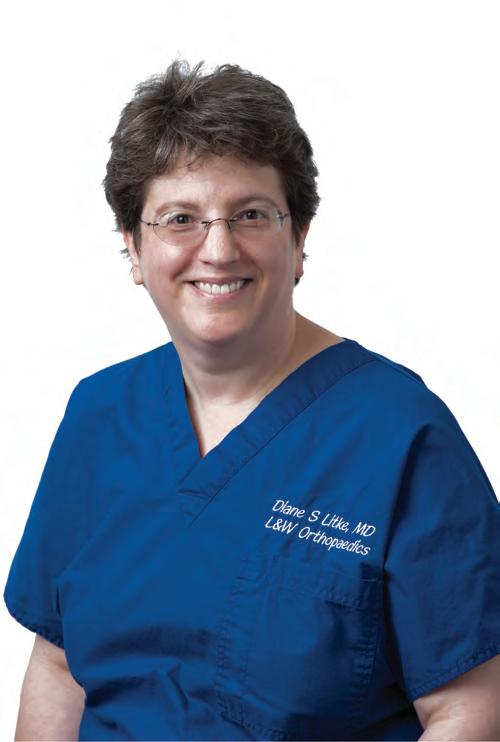
Orthopaedic Surgeons located in Richardson, TX

www.LWOrthopaedics.com


By LEU, PEIRCE & OLSON, PLLC
Leu, Peirce & Olson has many reasons to support efforts to end Alzheimer’s disease. As Elder Law attorneys, we witness daily the devastating effects of Alzheimer’s and other types of dementia on our clients and their families. Alzheimer’s is a progressive, fatal disease that destroys a person’s memory and brain functioning over time. It is the most common form of dementia, accounting for 60% to 80% of dementia cases. An estimated 6.9 million Americans age 65 and older are living with Alzheimer’s, which kills more people each year than breast cancer and prostate cancer combined. In 2024, Alzheimer’s and other dementias are estimated to cost the United States $360 billion, with this number projected to rise to nearly $1 trillion by 2050.

Thanks to the Alzheimer’s Association, individuals living with Alzheimer’s, their caregivers, and loved ones are not fighting this disease alone. Formed in 1980, the Alzheimer’s Association is the leading voluntary health organization for Alzheimer’s care, support, and research. Through fundraising, the Alzheimer’s Association provides care and support for individuals living with Alzheimer’s and other dementias on a national and local level, funds critical research for treatment and prevention, and serves as the leading voice for Alzheimer’s disease advocacy. None of that would be possible without large-scale fundraising and community support. The Walk to End Alzheimer’s has evolved into the world’s largest event to raise awareness and funds for Alzheimer’s care, research, and support. Held in over 600 communities, this one-day event calls upon walkers of all ages to come out and support those touched by Alzheimer’s.
Leu, Peirce & Olson works closely with the Dallas and Northeast Texas Chapter of the Alzheimer’s Association, and encourages the community to join us at the Walk to End Alzheimer’s on September 28th in The Colony. The Leu, Peirce & Olson team and their families, the “Wonder Walkers,” will be there showing their support for the more than 400,000 people in Texas living with Alzheimer’s. There will also be a Walk to End Alzheimer’s in Dallas, at Dallas City Hall Plaza, on November 2nd. Participation in the Walk to End Alzheimer’s is simple. Sign up individually or as a team at www.alz.org/dallasnetexas.
Leu, Peirce & Olson believes wholeheartedly in the mission to end
Alzheimer’s through research, care, and support for those affected by the disease. As Elder Law attorneys, we strive to alleviate the anxiety of our clients by providing a comprehensive roadmap to planning for a future with dementia. After a diagnosis of dementia, you may ask: “Who will take care of me when I need help? How will I pay for the care I need? Who can I trust to protect me?” Attorneys who devote their practice to Elder Law can help you understand your options and guide you through these important decisions. With special sensitivity to the legal issues surrounding the healthcare of older adults, Elder Law attorneys empower seniors through the long-term care planning process by ensuring proper estate planning documents are in place and assisting with planning for the cost of long-term care.
It is estimated that every 65 seconds someone in the United States develops Alzheimer’s disease. Although Elder Law attorneys strive to protect the future of those who suffer from Alzheimer’s and other types of dementia, these legal safety nets are only temporary solutions until a cure can be found. It takes action and resources to make a difference, and everyone can help lead the way. Educate your family, friends, and colleagues that all of us are at risk of being touched by Alzheimer’s, and encourage them to join the fight to find a cure.
Currently, one in three seniors dies with Alzheimer’s or another dementia, and Alzheimer’s is the only leading cause of death that cannot be prevented, cured, or even slowed. A permanent solution can only come from a cure, and a cure can only come with your help. Bring your family and friends with you to support the Walk to End Alzheimer’s in The Colony on September 28th or in Dallas on November 2nd and join a community of others walking together to end Alzheimer’s.
Lori Leu, Erin Peirce, and Lauren Olson are Elder Law attorneys with Leu, Peirce & Olson, PLLC located in Plano, Texas. They can be reached at 972-996-2540.
Maintaining a healthy diet can seem like a daunting task in our fast-paced, multi-tasking world of quick foods and quick fad diets. I invite you to visit the concept of “eating clean.” By just focusing on eating clean, you get a straightforward, accessible approach to ensuring you’re nourishing your body with wholesome, nutrient-rich foods. Unlike restrictive diets that focus on what you can’t eat, eating clean is about embracing real, unprocessed foods and developing a balanced, sustainable way of eating.
At its core, eating clean revolves around consuming whole, minimally processed foods that are as close to their natural state as possible. The idea is to avoid foods laden with additives, preservatives, artificial colors, and unhealthy fats. Instead, the focus is on fresh fruits and vegetables, whole grains, lean proteins, and healthy fats.
Clean eating isn’t a fad diet with rigid rules; it’s a flexible lifestyle choice that encourages making mindful food selections. The aim is not just to lose weight but to nourish your body with the nutrients it needs to function optimally. Eating clean is about creating a sustainable and enjoyable way of eating that supports overall health and well-being.
The Simple Basics of Clean Eating
• PRIORITIZE WHOLE FOODS: The foundation of a clean eating diet is whole foods. These are foods that have undergone little to no processing, retaining their natural nutrients. Fresh fruits and vegetables, whole grains like brown rice and quinoa, and unprocessed meats and fish are all examples of whole foods. These foods provide essential vitamins, minerals, and fiber while avoiding unnecessary additives.
• AVOID PROCESSED FOODS: Processed foods are often stripped of their natural nutrients and loaded with unhealthy ingredients like added sugars, unhealthy fats, and sodium. Examples include sugary cereals, packaged snacks, and fast

food. By steering clear of these items, you reduce your intake of empty calories and harmful chemicals, promoting better health.
• CHOOSE HEALTHY FATS: Not all fats are created equal. Clean eating encourages the consumption of healthy fats, such as those found in avocados, nuts, seeds, and olive oil. These fats are essential for heart health, brain function, and hormone production. Avoid trans fats and highly processed oils, which are linked to various health issues.
• LIMIT ADDED SUGARS: Excessive sugar intake is associated with numerous health problems, including obesity, diabetes, and heart disease. Clean eating emphasizes reducing added sugars by choosing natural sweeteners like honey or maple syrup and enjoying the natural sweetness of fruits.
• STAY HYDRATED WITH WATER: Proper hydration is crucial for overall health. Water is the cleanest beverage choice, free from sugars, additives, or artificial ingredients. Drinking plenty of water throughout the day helps maintain energy levels, supports digestion, and aids in the body’s natural detoxification processes.
Eating Clean at the Grocery Store
Shopping for clean foods can be simple and straightforward when you know what to look for. Here are some tips to help you make the best choices while at the grocery store:
• SHOP THE PERIMETER: The outer aisles of most grocery stores typically contain fresh produce, meats, dairy, and whole grains. These areas are where you’ll find the most natural, unprocessed foods. Avoid the inner aisles, which are usually filled with processed snacks, sugary cereals, and canned goods high in sodium.
• READ INGREDIENT LABELS: When buying packaged foods, always check the ingredient list. A shorter ingredient list usually indicates less processing. Avoid products with ingredients that sound like chemicals or that you can’t easily pronounce, as these are likely additives or preservatives.
• CHOOSE WHOLE GRAINS: When selecting grains, opt for whole versions like brown rice, quinoa, oats, and whole-wheat pasta. These are less processed and retain more of their natural nutrients compared to refined grains like white rice and white bread.
• BUY ORGANIC WHEN POSSIBLE: Organic foods are grown without synthetic pesticides or fertilizers, making them a cleaner option. While organic can sometimes be more expensive, prioritizing organic versions of the “Dirty Dozen” (fruits and vegetables most likely to contain pesticide residues) can be a good place to start.
• FOCUS ON FRESH PRODUCE: Fresh fruits and vegetables should make up a significant portion of your diet when eating clean. Look for a variety of colors to ensure you’re getting a wide range of nutrients. If fresh produce is too expensive or not available, frozen options are also a good choice, as they are often flash-frozen at their peak ripeness.
Adopting a clean eating lifestyle is easier when you have a plan in place. Here are some tips to help you stay on track:
• MEAL PREP: Preparing meals in advance is one of the best ways to ensure you stick to clean eating. Set aside time each week to plan and prepare your meals. This not only saves time during the week but also reduces the temptation to grab unhealthy, processed foods when you’re busy.
• COOK AT HOME: Cooking at home gives you full control over what goes into your food. You can choose fresh, high-quality ingredients and avoid unnecessary additives. Plus, home-cooked meals often taste better and can be more satisfying than pre-packaged or restaurant meals. A quick search on the internet for “Clean Eating Recipes” will provide an endless list of ideas to suit your taste buds, including deserts!
• LISTEN TO YOUR BODY: Clean eating is about nourishing your body, so it’s essential to pay attention to how different foods make you feel. If certain foods leave you feeling sluggish or unwell, consider cutting back or eliminating them from your diet.
• PRACTICE MINDFUL EATING: Mindful eating involves paying full attention to your eating experience. Slow down, savor each bite, and listen to your hunger and fullness cues. This practice can help you enjoy your food more and prevent overeating.
• BALANCE AND MODERATION: While clean eating emphasizes whole, unprocessed foods, it’s important to maintain balance and moderation. There’s no need to be overly restrictive; occasional indulgences are part of a healthy lifestyle. The key is to make sure that the majority of your diet consists of clean, nutritious foods.
The benefits of clean eating extend beyond just physical health. Here are some of the many advantages:
• INCREASED ENERGY: Whole foods are rich in vitamins, minerals, and other nutrients that your body needs for energy production. By eating clean, you may notice an increase in your energy levels and overall vitality.
• IMPROVED DIGESTION: A clean diet, rich in fiber from fruits, vegetables, and whole grains, supports healthy digestion and can prevent common digestive issues like constipation and bloating.
• BETTER SKIN HEALTH: The nutrients found in clean foods, such as antioxidants, vitamins, and healthy fats, can promote clearer, healthier skin. Reducing sugar and processed foods also helps to prevent breakouts and other skin problems.
• WEIGHT MANAGEMENT: Clean eating can naturally lead to weight loss or maintenance, as it encourages nutrient-dense, low-calorie foods. Since clean eating avoids processed foods, it also reduces the intake of empty calories that contribute to weight gain.
• ENHANCED MENTAL CLARITY: Eating clean can also benefit your mental health. Nutrient-rich foods support brain function, potentially improving focus, memory, and overall mental clarity.
You can easily incorporate this beneficial lifestyle into your daily routine. Remember, eating clean is not about perfection—it’s about making better choices most of the time and enjoying a healthier, more balanced way of eating.

OLIVIA ROGERS , RN, BSN, CHPN, CHPO, MBA,
Dear Olivia,
I hear a lot about hospice, but I am honestly not sure what one would receive while on hospice, or how it works alongside my other medical care. Can you explain to me the hospice philosophy of care?
~Unsure What Hospice Really Is
Dear Unsure What Hospice Really Is,
At the Visiting Nurse Association (VNA), our hospice mission statement is “To provide quality of life through comprehensive interdisciplinary care that addresses physical, spiritual, emotional, and mental health, while also caring for the families of those facing serious or life limiting illness and loss.” It is the goal of hospice to improve quality of life for those who are facing a terminal condition. The Medicare Hospice Benefit criteria states that a person qualifies for hospice if their doctor believes that they have a prognosis of six months or less if the disease follows the normal course. That means that hospice is not



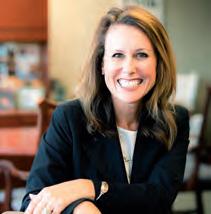

only for those who are imminently dying, but may also be appropriate for those who are nearing the end of disease-specific treatment, may not wish to return to the hospital any longer, or those who are facing a decline in condition. The VNA Hospice Care team will provide care in the home by a skilled nurse, social worker, chaplain, personal care attendant and others, all of whom make visits to wherever the patient calls home to ensure the best quality of life possible and support for caregivers. This includes symptom management, medication management and providing those medications, ensuring a safe place to provide care and training caregivers on how to do so, supply delivery and medical equipment delivery to meet the needs of each individual patient. We can work with your chosen attending physician to ensure good communication and follow through. We are here to serve you and ensure that your wishes and goals of care are met through the delivery of hospice care.

“Where we are committed to excellence”


Cantex Continuing Care Network has been performing the highest standards of transitional healthcare and long-term residential services for more than 30 years. Ask anyone who knows. Cantex stands for quality.




•Private and semi-private studios, some with kitchen elements and/or Frenchdoor courtyard patios
•Flat-Screen televisions
•32 channels of satellite television service
•Wi-Fi internet access
•Electric beds for easy comfort adjustments
•Living room with fireplace and player piano
•Library with computer stations and complimentary internet access
•Chapel
•Neighborhood cafes with complimentary premium beverages and snacks
•Restaurant-Style dining room
•Beauty/barber shop with full-time beautician
•Activity program with community outings
•Sedan and van for resident transportation

•Around-the-clock skilled nursing
•Physical, Occupational, and Speech Therapies
•Wound Management
•Intravenous Therapy
•Tracheotomy Care
•Physician Services
•Medication Administration
•Enteral/Parenteral Therapy
•X-Ray Services
•Laboratory Services

» Staffed by 2 Licensed, Doctors of Audiology
» Hearing Aid Fittings, Maintenance and Repairs
» Invisible Fittings/Open Fittings
» Evaluation Period On All Hearing Aids
» Hearing Evaluations For All Ages
» Wireless/Connectivity Hearing Solutions
» Battery Purchase Programs
» Custom Ear Protection
»

Devices


By CASSANDRA WILSON, AU.D., CCC-A, FAAA
Hearing loss is a pervasive, often underestimated health issue in the United States, affecting millions across all age demographics. Despite its prevalence, hearing loss frequently goes unnoticed, resulting in a significant lack of awareness and understanding of its impact on individuals and society.
The Prevalence of Hearing Loss
Hearing loss is more common than most people realize. According to the National Institute on Deafness and Other Communication Disorders (NIDCD), approximately 15% of American adults—37.5 million people aged 18 and over—report experiencing trouble with hearing.
Hearing loss can result from various factors, both genetic and environmental. Here are some primary causes:
• AGING: Presbycusis, or age-related hearing loss, is the most common form. It occurs gradually as individuals age and often reduces the ability to hear high-pitched sounds.
• NOISE EXPOSURE: Prolonged exposure to loud noises— from music, machinery, firearms, or everyday city noise—can permanently damage the delicate hair cells in the inner ear, resulting in noise-induced hearing loss.
• GENETICS: Some forms of hearing loss are hereditary and can be passed down through families, with genetic factors significantly influencing susceptibility.
• MEDICAL CONDITIONS: Certain conditions, such as diabetes, cardiovascular disease, and infections like meningitis, can also contribute to hearing loss.
• MEDICATIONS: Ototoxic drugs can harm the auditory system, potentially causing hearing loss or tinnitus (ringing in the ears).
Difficulty understanding speech in noisy environments is the most commonly reported problem among individuals with hearing impairment. Clinical studies show that even mild hearing loss can hinder one’s ability to communicate against background noise.
In simple terms, noise is any unwanted signal that interferes with what the hearing instrument user wants to hear at a given moment. This concept is known as the Signal-to-Noise Ratio (SNR). When background noise is present, the speech signal (what we want to hear) is relatively low compared to the noise level. People with hearing loss require a more favorable SNR (louder speech than noise) to comprehend speech compared to those with normal hearing.
How do hearing instruments improve the SNR? The optimal way to minimize background noise is to prevent it from entering the hearing system. This can be achieved with advanced directional microphone technology, which assumes that the primary signal for the listener is speech. To enhance the SNR, the signals from the hearing aids use cues (how the person’s body movement, head movement, surrounding conversation activity, and acoustic sound scene analysis) to predict the user’s listening intent. By doing so, the hearing aid is better able to preserve and process the speech cues from the surrounding environmental sounds. This approach facilitates better speech understanding with reduced background noise interference. Can everyone benefit from directional microphone technology in hearing instruments? Yes, but the question remains: which technology is most appropriate? The answer largely depends on lifestyle. The more active a person is, and the more diverse their listening environments, the harder the hearing instrument must work for them, thereby necessitating more advanced directional technology. Your audiologist can help you make an informed decision about the technology based on your hearing loss and lifestyle requirements.

Texas Back Institute (TBI) has served the North Texas area in spine care for over 45 years. An uncompromising desire to put patients first and provide individualized spine care has helped change the treatment options available to patients for neck and back pain.
Today, TBI is a leader in artificial disc replacement, minimally invasive spine surgery, complex revision surgery, and treatment of spinal deformity. TBI has trained hundreds of surgeons, scientists,
and allied health professionals now practicing worldwide. Its research institute employs state-of-the-art technology and is actively involved in many clinical trials, including artificial disc replacement, minimally invasive technologies, and robotic spine surgery. Texas Back Institute has remained one of the most academic practices in spine care. It is one of the largest multidisciplinary spine centers in the world, providing comprehensive care for neck and back pain. With a fully dedicated staff of board-certified orthopedic spine surgeons, neurosurgeons, physiatrists, and physical therapists, the TBI team works together to support its mission of helping patients get back to life. The 26 physicians at Texas Back Institute are leaders in the surgical and nonsurgical treatment options for back and neck pain, from the most common outpatient procedures to the most complex cases. Thanks to the unmatched expertise of the medical staff, the advanced diagnostic testing, and an unparalleled commitment to patient care, the Texas Back Institute physicians can identify the potential cause of your pain and create a treatment plan specific to your needs.
Texas Back Institute has developed several spine specialty programs. These include the Minimally Invasive Spine Surgery Center, Center for Disc Replacement, Scoliosis and Spine Tumor Center, and Complex Back Surgery Center. These programs give patients access to highlytrained care teams who focus specifically on these areas of spine care, allowing patients in the North Texas area access to treatment options for their individual problems from physicians with extensive experience in these areas.
“At Texas Back Institute, finding the right solution for each patient and offering the least invasive treatment is core to our belief and the foundation for all treatment plans.” Dr. Michael Duffy.


3025 N. Tarrant Pkwy., Ste. 220 Fort Worth (Alliance), TX 76177
ARGYLE
310 FM 407E, Ste. 100 Argyle, TX 76226
DALLAS
12222 N. Central Expy. Pavilion II, Ste. 310 Dallas, TX 75243
3537 S. Interstate 35, Ste. 308 Denton, TX 76210
4370 Medical Arts Dr. River Walk Bldg. III, Ste. 230 Flower Mound, TX 75028
1650 W. Rosedale St., Ste. 301 Fort Worth, TX 76104
FRISCO
5575 Frisco Square Blvd. Ste. 400 Frisco, TX 75034
500 W. Main St., Ste. 380 Lewisville, TX 75057
2925 E. Broad St., Ste. 101 Mansfield, TX 76063
MCKINNEY
4510 Medical Center Dr. Ste. 106 McKinney, TX 75069
CENTRAL PLANO
4001 W. 15th St., Ste. 455 Medical Office Bldg. III Plano, TX 75093
PLANO
6020 W. Parker Rd. Ste. 200 Plano, TX 75093
ROCKWALL
3164 Horizon Rd., Ste. 100 Rockwall, TX 75032
TEXOMA
4616 US-75, Ste. 202 Denison, TX 75020
WICHITA FALLS
501 Midwestern Pkwy. East Wichita Falls, TX 76302
Macular Degeneration
Diabetic Eye Disease
Retinal Vein & Artery Occlusions
Flashes & Floaters
Retinal Tears & Detachments
Macular Pucker/Epiretinal
Membrane
Macular Holes
Uveitis

At Texas Macula & Retina, our mission is to provide exceptional eye care with a focus on the diagnosis, treatment, and management of retinal disorders.
Dr. Adams is a board-certified Ophthalmologist and Ophthalmic Surgeon specializing in Vitreoretinal Surgery. His principal areas of interest include age-related macular degeneration, diabetic retinopathy, retinal detachment repair, macular surgery, retinal lasers, and secondary intraocular lens implantation.
Dr. Adams and his team are committed to preserving and improving the vision and overall quality of life for our patients by offering the most advanced and personalized retina care available.


By MATTHEW K. ADAMS, MD, MBA
Diabetes is a chronic condition that affects millions of people worldwide, and while its impact on blood sugar levels is wellknown, its effects on vision are often overlooked. Understanding how diabetes can affect eye health is crucial for all people who have this condition. It’s important to understand the various ways diabetes can impact your eyes so you can protect your vision.
Diabetes primarily affects the eyes through a group of conditions collectively known as diabetic eye disease. The most common of these conditions are diabetic retinopathy, diabetic macular edema, and cataracts. Each of these conditions can lead to vision impairment or even blindness if left untreated.
Diabetic retinopathy is the most common cause of vision loss among people with diabetes and is a leading cause of blindness among working-aged adults. This condition occurs when high blood sugar levels damage the blood vessels in the retina, the light-sensitive tissue at the back of the eye.
There are two stages of diabetic retinopathy: non-proliferative and proliferative. In the non-proliferative stage, the blood vessels in the retina may swell and leak fluid, causing blurry vision. In the more advanced proliferative stage, new, abnormal blood vessels begin to grow on the surface of the retina. These vessels can bleed into the vitreous (the clear, gel-like substance inside the eye), leading to severe vision loss or even retinal detachment.
DME is a complication of diabetic retinopathy and occurs when fluid leaks into the macula, the part of the retina responsible for sharp, central vision. This leakage causes the macula to swell, leading to blurry or wavy vision. DME is a major cause of vision loss in people with diabetes and can make it difficult to perform tasks that require clear vision, such as reading, driving, or working on a computer.
While cataracts can develop in anyone as they age, people with diabetes are at a significantly higher risk of developing them at a younger age. A cataract occurs when the eye’s lens becomes cloudy, leading to vision that is blurry, dim, or tinted. In individuals with diabetes, high blood sugar levels can cause the lens to swell and change its clarity, accelerating the formation of cataracts. This can make it challenging to see clearly, especially in low-light conditions (i.e. driving at night).
The good news is that by managing your diabetes effectively and getting regular eye exams, you can significantly reduce your risk of developing serious eye problems. Here are some steps you can take to protect your vision:
1. CONTROL YOUR BLOOD SUGAR
The most important step in preventing diabetic eye disease is to keep your blood sugar levels within your target range. Consistently high blood sugar can damage the blood vessels in your eyes, so it’s crucial to monitor your levels regularly and follow your healthcare provider’s recommendations for managing your diabetes.
2. MONITOR BLOOD PRESSURE AND CHOLESTEROL
High blood pressure and high cholesterol can further increase your risk of developing diabetic eye disease. Managing these conditions through medication, diet, and exercise can help protect your eyes and overall health.
3. GET REGULAR EYE EXAMS
Annual comprehensive eye exams by a retina specialist are essential for detecting diabetic eye disease in its early stages, often before you notice any symptoms. During these exams, your eye doctor will dilate your pupils to get a better view of the retina and check for signs of damage. Early detection can lead to more effective treatment and a better outcome for your vision.
4. ADOPT A HEALTHY LIFESTYLE
Eating a balanced diet, exercising regularly, and maintaining a healthy weight can help you manage your diabetes and reduce the risk of complications, including those that affect your eyes. Incorporating foods rich in antioxidants, such as leafy greens, fruits, and nuts, can also support eye health.
By controlling your blood sugar levels, getting regular eye exams, and adopting a healthy lifestyle, you can reduce your risk of diabetic eye disease and maintain clear vision for years to come. Remember, your eyes are not only the windows to your soul but also to your overall health. Don’t take them for granted.
Brian Nwannunu, MD, MS, is an orthopedic surgeon specializing in hip and knee replacement. He care for patients at Texas Joint Institute in McKinney, Texas.
Dr. Nwannunu, a native of Dallas, graduated Valedictorian from the High School for Health Professions at Townview Magnet Center in DISD. He then earned his bachelor’s degree in Biology at Morehouse College in Atlanta, Georgia, where he was part of the Morehouse College Honors Program. Upon graduation, he completed his master’s degree in Physiology at Georgetown University in Washington, D.C., with a concentration on complementary and alternative medicine. Dr. Nwannunu then graduated with his medical degree from Howard University College of Medicine in Washington, D.C., where he was inducted into the Alpha Omega Alpha Honor Medical Society.
Dr. Nwannunu completed his residency in orthopedic surgery at the John Peter Smith Health Network in Fort Worth, Texas, before pursuing additional training with a fellowship in adult reconstruction at Baylor College of Medicine in Houston, Texas. In addition to his clinical training, Dr. Nwannunu enjoys mission work abroad, providing medical care and health education to populations in need.
He is a member of the American Medical Association, National Medical Association, American Academy of Orthopaedic Surgeons and the American Association of Hip and Knee Surgeons.
When not working, Dr. Nwannunu enjoys basketball, weight training, outdoor activities, attending art and music festivals, traveling, world news, and reading.
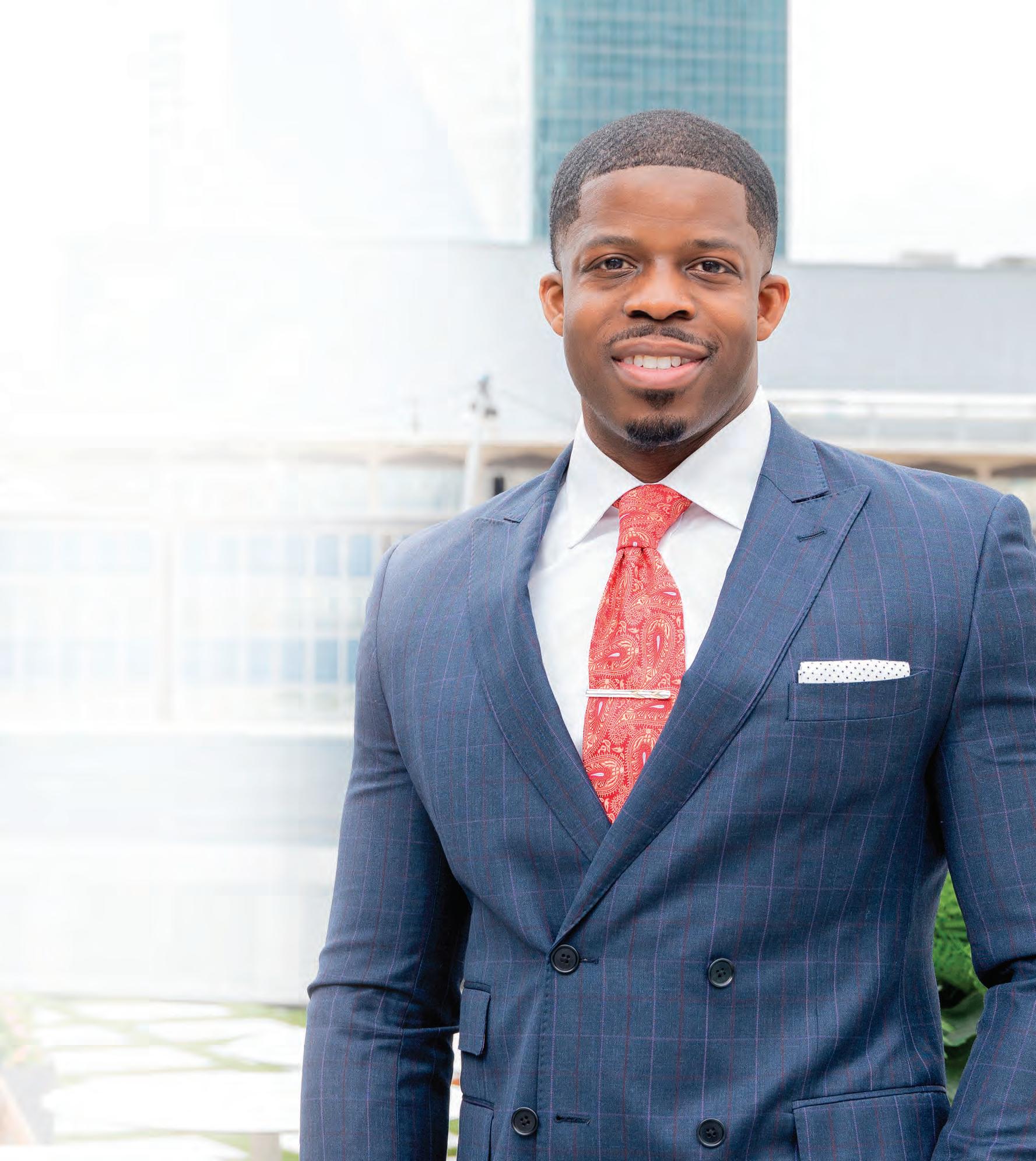


Southwest Foot & Ankle Center is a respected group of board certified foot and ankle surgeons. They are fellow trained surgeons, and board certified in wound care and reconstructive surgery. All physicians have also completed an intense residency and fellowship in the area of limb salvage, and foot and ankle surgery. The team at Southwest Foot & Ankle Center strive to make each patient’s experience personable. Our outcomes are of perfection and meticulous in surgery. As a result, patients from all over the country seek to be treated by DFW Wound Care Center.
Foot and Ankle Surgery
Bunion and Hammer Toe Correction
MIS—Minimally Invasive Surgery
Heel Pain (Plantar Fasciitis) Stem Cell Therapy
Neuropathy

Ingrown Toenails Tarsal Tunnel Syndrome
Foot Care
Feet Trauma Wound Care
Custom Orthotics & Braces
Laser Therapy for Pain, Swelling, Arthritis, and Wounds PLANO CLINIC
LEWISVILLE CLINIC 502 N. Valley Pkwy., #2 Lewisville, TX 750067





By KAY BEACHAM
Iremember my family sitting on my grandparents’ porch and having long, slow conversations with one another and visiting occasionally with the neighbors. The kitchen was the heartbeat of the house and there always seemed to be something good cooking or brewing. The phone might have rang two or three times a day at most. It was a great way to spend time after a long day or week at work.
The conveniences of modern times have brought about stress and anxiety that previous generations didn’t face. We constantly juggle work, family, social obligations, and personal aspirations, all while being bombarded by information from every corner and our smart phones. While it would be naïve for us to romanticize the past as entirely stress-free, there is much to be learned from the way previous generations lived.
Our grandparents’ generation, particularly those who lived through the Great Depression, World War II, or the post-war era, undoubtedly faced significant challenges. Economic hardships, uncertainty, and the
trauma of war were prominent stressors. However, the nature of stress and anxiety during those times was often more immediate and survival-oriented. People were concerned with putting food on the table, ensuring their families’ safety, and rebuilding their lives in the aftermath of global conflicts.
Today’s stressors are multifaceted and often more abstract. The pressures of a globalized economy, the demands of constant connectivity through social media and technology, and the expectations of achieving success in an increasingly competitive world contribute to a pervasive sense of anxiety. Unlike the clear and tangible challenges of the past, modern stress is often characterized by a sense of overwhelming options and uncertainty about the future. This can lead to chronic stress, where the body’s stress response is constantly activated, resulting in long-term health issues such as anxiety disorders, depression, and cardiovascular problems.
One of the most striking differences between the lifestyles of our grandparents and our own is the pace of life. In the past, daily life was structured around routines that were dictated by natural rhythms— daylight, seasons, and agricultural cycles. This allowed for more downtime which is crucial for mental health. Today, the 24/7 nature of modern life, driven by technology and the expectation of constant availability, leaves little room for rest. The lack of boundaries between work and personal life, exacerbated by remote work and mobile devices, means that many people never truly switch off, leading to burnout.
Applying the Lesson: One way to combat modern stress is by intentionally slowing down and creating clear boundaries between different aspects of life. This could involve setting specific times for work and relaxation, adopting a digital detox routine, or incorporating mindfulness practices such as meditation or yoga into daily life.
Our grandparents often lived in close-knit communities where social support was readily available. Families were larger and more extended, with multiple generations often living under one roof or in close proximity. Neighbors knew each other, and there was a strong sense of community, with people regularly coming together for social events, religious gatherings, and communal activities. This social fabric provided a buffer against stress, as individuals had a network of people to rely on during difficult times.
Modern life is marked by increasing social isolation. Urbanization, the breakdown of extended families, and the rise of individualism have led to a weakening of social ties. While social media offers the illusion of connection, it often lacks the depth and emotional support of real-life relationships. Loneliness has become a significant issue, contributing to the rise in anxiety and depression.
Applying the Lesson: Rebuilding a sense of community and fostering strong social connections can be a powerful antidote to stress. This might involve spending more time with family, reaching out to neighbors, or getting involved in local organizations or clubs. Even small acts, such as regularly checking in on friends or participating in community events, can create a sense of belonging and support that helps mitigate stress.
For our grandparents, work was often physically demanding but had clearer boundaries. The workday typically ended at a set time, and evenings and weekends were reserved for leisure, family, and community activities. Leisure time was not just a luxury but a vital part of life, with people engaging in hobbies, outdoor activities, and socializing. Today, the lines between work and leisure are increasingly blurred. The rise of the gig economy, remote work, and the expectation of being constantly connected mean that many people struggle to truly disengage from work. Leisure time is often filled with passive activities like scrolling through social media or binge-watching TV, which, while relaxing in the short term, do not provide the same restorative benefits as more active forms of leisure.
Applying the Lesson: Prioritizing meaningful leisure activities and setting strict boundaries around work can help restore balance. Engaging in hobbies, spending time outdoors, or simply enjoying a meal with family without distractions can provide the mental and physical relaxation needed to counteract the effects of stress. It’s also important to recognize the value of doing nothing.
Our grandparents’ generation lived through times of scarcity, which influenced their attitudes towards material possessions. They tended to be frugal, valuing what they had and making the most of limited resources. This mindset often led to a greater appreciation for the simple things in life—home-cooked meals, handmade items, and the joy of spending time with loved ones. There was less emphasis on consumerism, and people were less likely to equate their self-worth with material success.
In contrast, modern society is highly materialistic, with success often measured by the accumulation of wealth and possessions. The pressure to constantly upgrade and consume contributes to financial stress and a sense of inadequacy. This relentless pursuit of material goods can lead to a cycle of stress, as people work harder to afford a lifestyle that may ultimately bring little satisfaction.
Applying the Lesson: Embracing a more minimalist and frugal lifestyle can reduce financial stress and lead to greater contentment. This might involve prioritizing experiences over possessions, practicing gratitude for what one already has, and being mindful of spending habits.
Many of our grandparents had a close connection with nature, whether through farming, gardening, or simply spending time outdoors. This connection provided not only physical exercise but also a sense of peace and grounding. Nature has a calming effect on the mind, reducing stress and promoting mental well-being. In contrast, modern life is often spent indoors, with little direct contact with the natural world. Urbanization, long working hours, and the rise of screen-based entertainment have led to a disconnection from nature, contributing to feelings of stress and anxiety.
Applying the Lesson: Reconnecting with nature can be a powerful way to reduce stress. This can be as simple as taking regular walks in a park, gardening, or spending time in green spaces. Even small doses of nature, such as having plants at home or sitting by a window with a view of trees, can have a positive impact on mental health.
While our grandparents faced their own unique challenges, their ability to find contentment in simplicity, community, and a connection with the natural world offers valuable lessons for us today. By blending the best of the past with the conveniences and opportunities of the present, we can create a lifestyle that supports mental and emotional well-being in the face of modern pressures.

RECOGNIZED DWI AND CRIMINAL DEFENSE LAW FIRM
Attorney Deandra M. Grant leads Hamilton Grant’s North, East and Central Texas offices. She is an international speaker on DWI law, science and trial skills. As the author of the annually updated Texas DWI Manual, she is viewed by her peers as being a leader in her field. Deandra understands the science behind alcohol absorption and elimination rates and can use this knowledge to competently defend you.
Deandra formerly was an assistant district attorney. Her tenure as a prosecutor focused on DWI prosecutions which has given her firsthand knowledge on how to counter the prosecutor’s evidence and strategy. Deandra has spent hundreds of hours in training courses and programs related to DWI defense and has completed the certification course to administer standard field sobriety testing (SFST), the same training course taught to police officers nationwide on how to identify drunk drivers during traffic stops. As a certified SFST Instructor, Deandra has taught the course to other attorneys. She’s also completed the coursework on DWI forensic blood and urine testing.


“I have a masters degree in pharmaceutical science and a graduate certificate in forensic toxicology. I am able to take apart evidence in ways a lot of other attorneys are not able to do. The most important part of my job is being the barrier between the government and my client. Standing between them. Making sure their rights are protected.”
–DEANDRA GRANT

Josh Creel, DC is a chiropractor with Airrosti, a healthcare group that specializes in rapid recovery for soft tissue injuries by utilizing manual therapy—a hands-on treatment used to alleviate pain, improve mobility, and promote overall physical well-being. In nearly all cases, this allows for rapid recovery, complete injury resolution, and lasting results. In-clinic patients should expect to see dramatic improvement after the first visit, and most patients experience complete injury resolution in as few as three visits (based on in-clinic and Remote Recovery patientreported outcomes).
Dr. Creel has been serving the McKinney/Prosper area for 10 years and provides patients with an individualized treatment plan, and uses a variety of techniques, including joint mobilization, soft tissue manipulation, and muscle energy techniques to address specific musculoskeletal issues and promote recovery.
Dr. Creel graduated with honors from Mississippi State University. Soon after, he received his Doctor of Chiropractic degree from Parker University in Dallas, Texas. In Dr. Creel’s free time, he enjoys all types of fitness activities and spending time with his wife and three children. Dr. Creel is an active member of Lighthouse Church in Prosper, TX.



Florian F. Dibra, MD is an orthopedic surgeon located in Frisco, Texas who has extensive knowledge in hip and knee orthopedics and treats operative and non-operative hip and knee arthritis. He focuses on minimally invasive muscle-sparing total hip and knee replacement, anterior hip replacement, partial knee replacement, robotic joint replacement and complex hip and knee replacement revisions. Dr. Dibra is specialized in MagicKnee and MagicHip, muscle-sparing techniques with robotic technology.
Dr. Dibra graduated with honors from Villanova University in Pennsylvania. Soon after, he received his medical degree, with cum laude honors from the esteemed Jefferson Medical College in Philadelphia, Pennsylvania. He completed his orthopedic surgery training at the University of Florida. He continued at the University of Florida Health Hospital to complete his fellowship in Adult Arthroplasty with an emphasis in hip and knee reconstruction. During Dr. Dibra’s surgical training, he accomplished several publications, book chapters, and poster presentations.
Dr. Dibra’s family consists of his wife and two children. In addition to English, he is fluent in Albanian, Italian, and proficient in Spanish.














